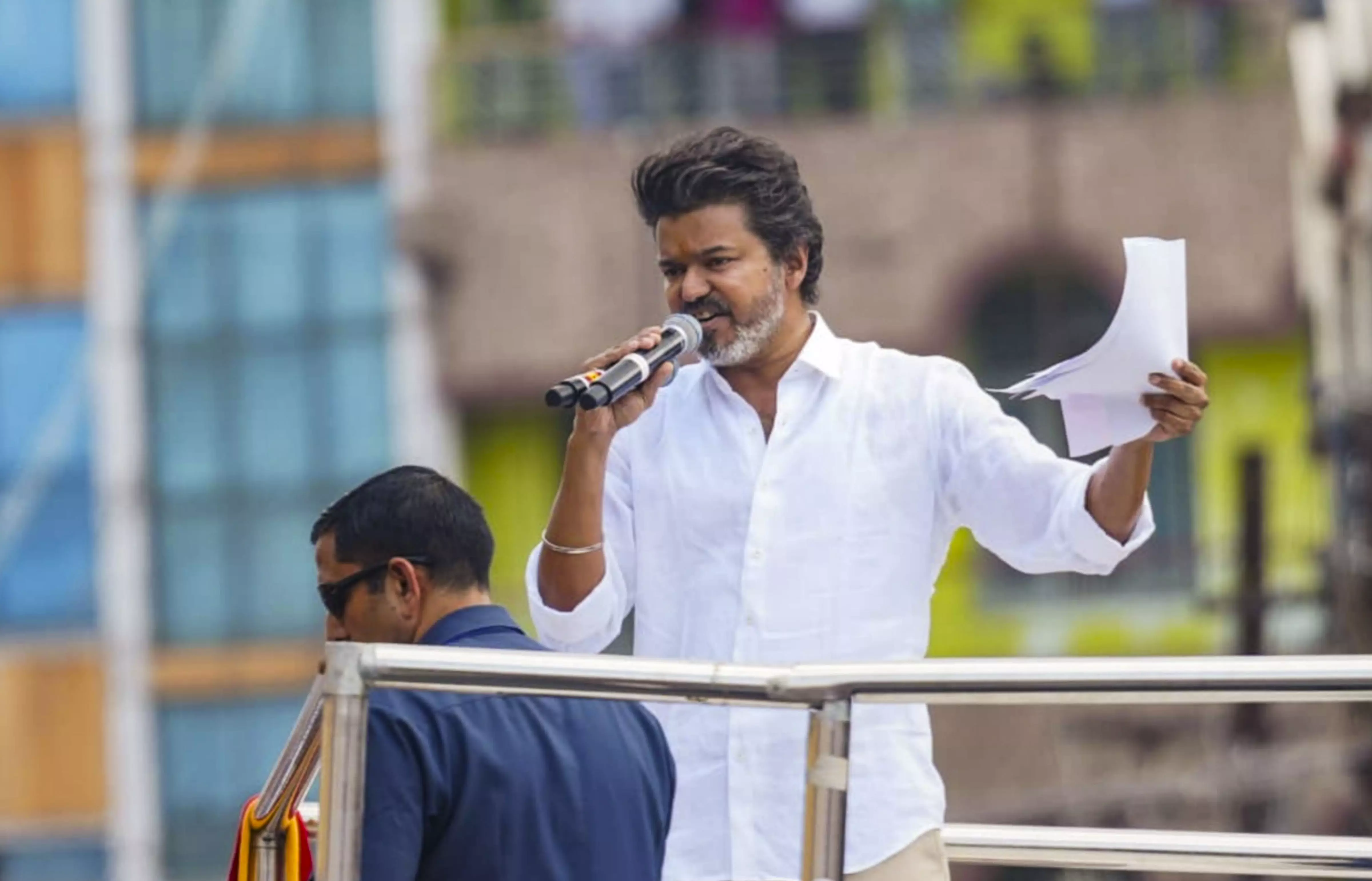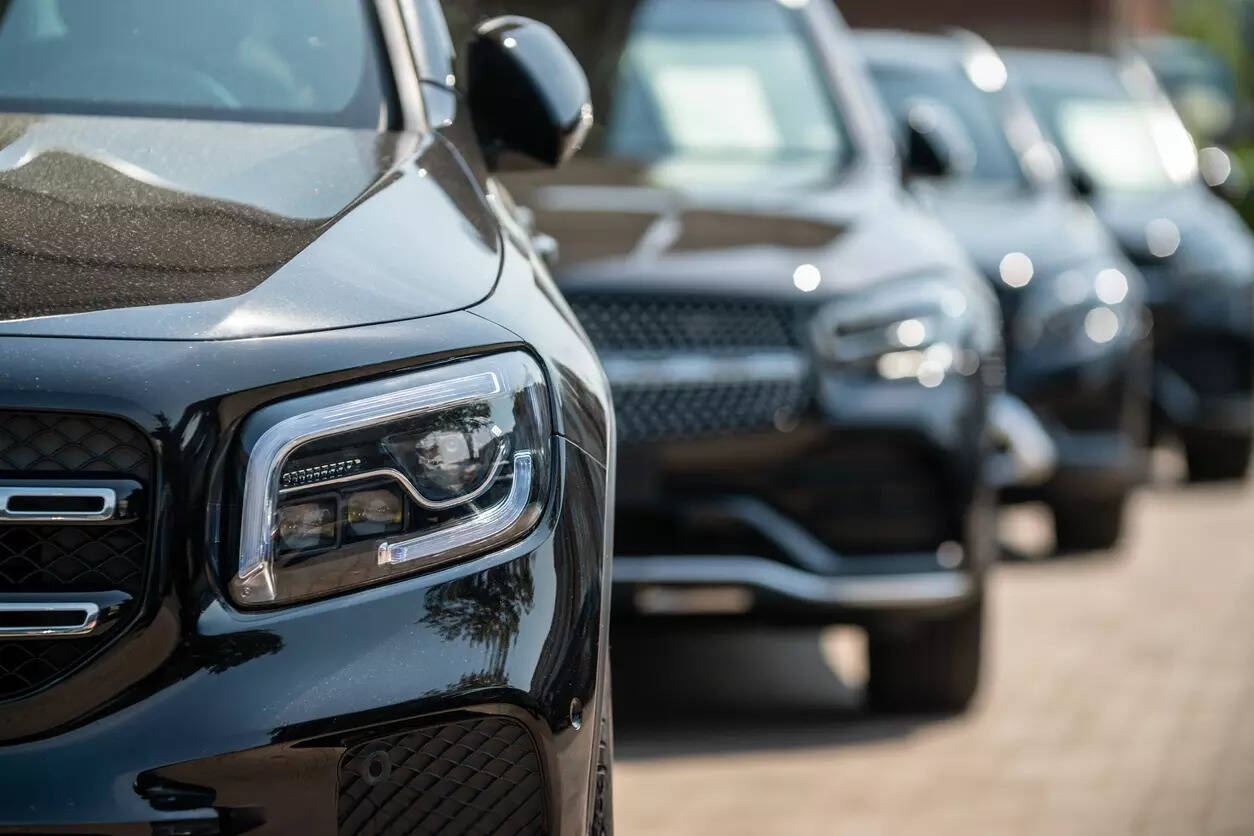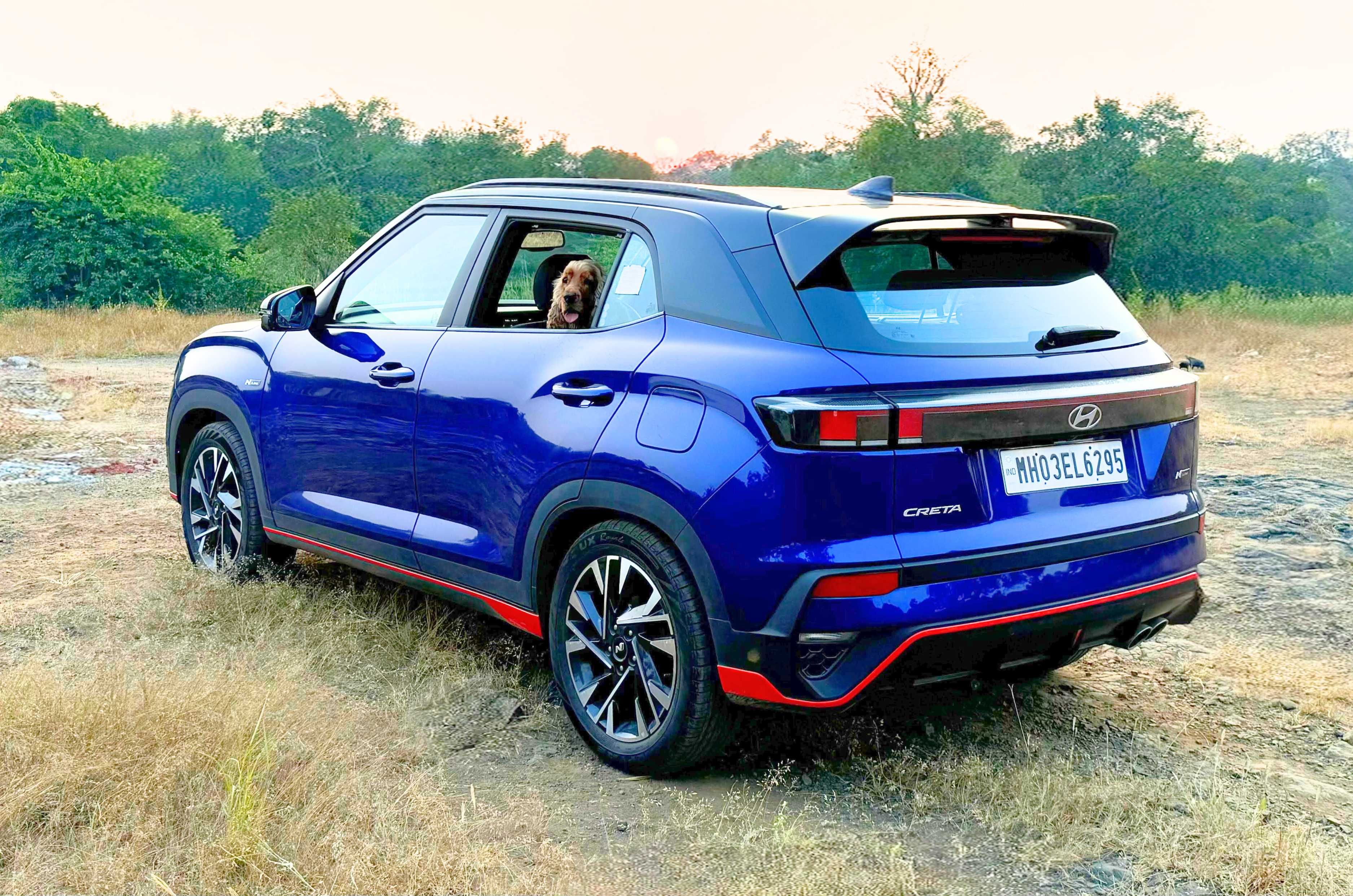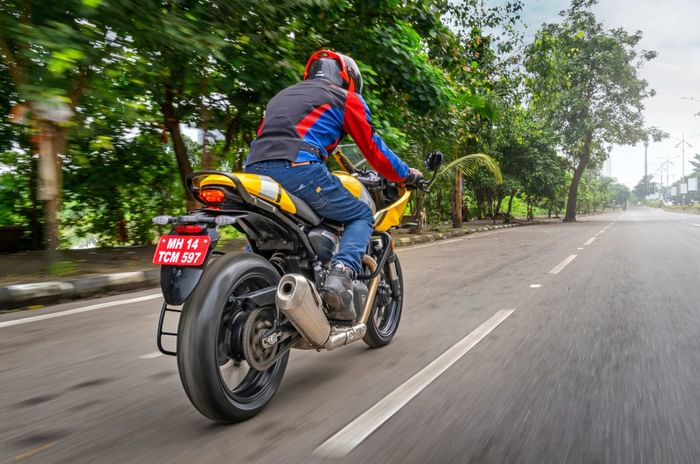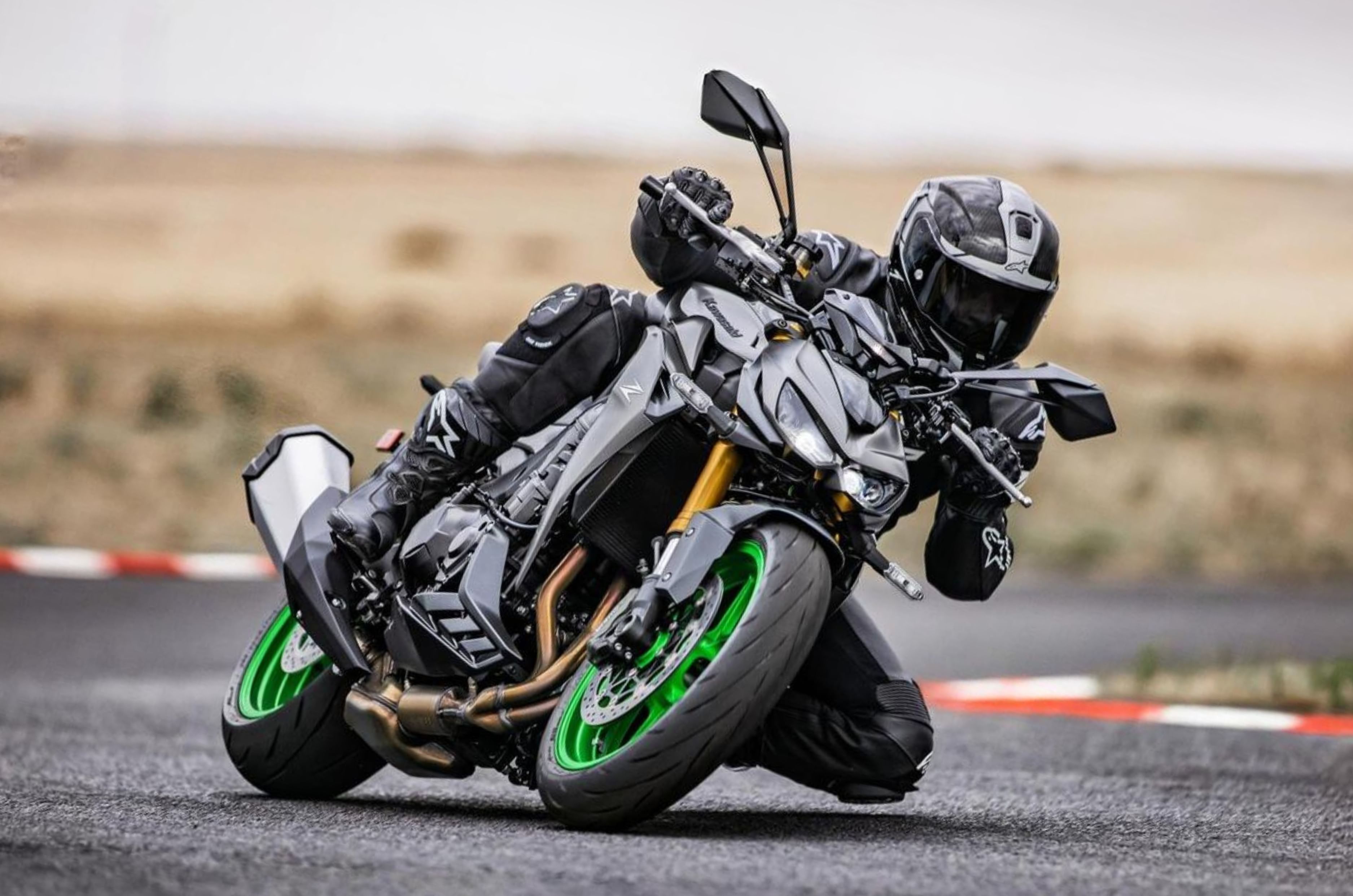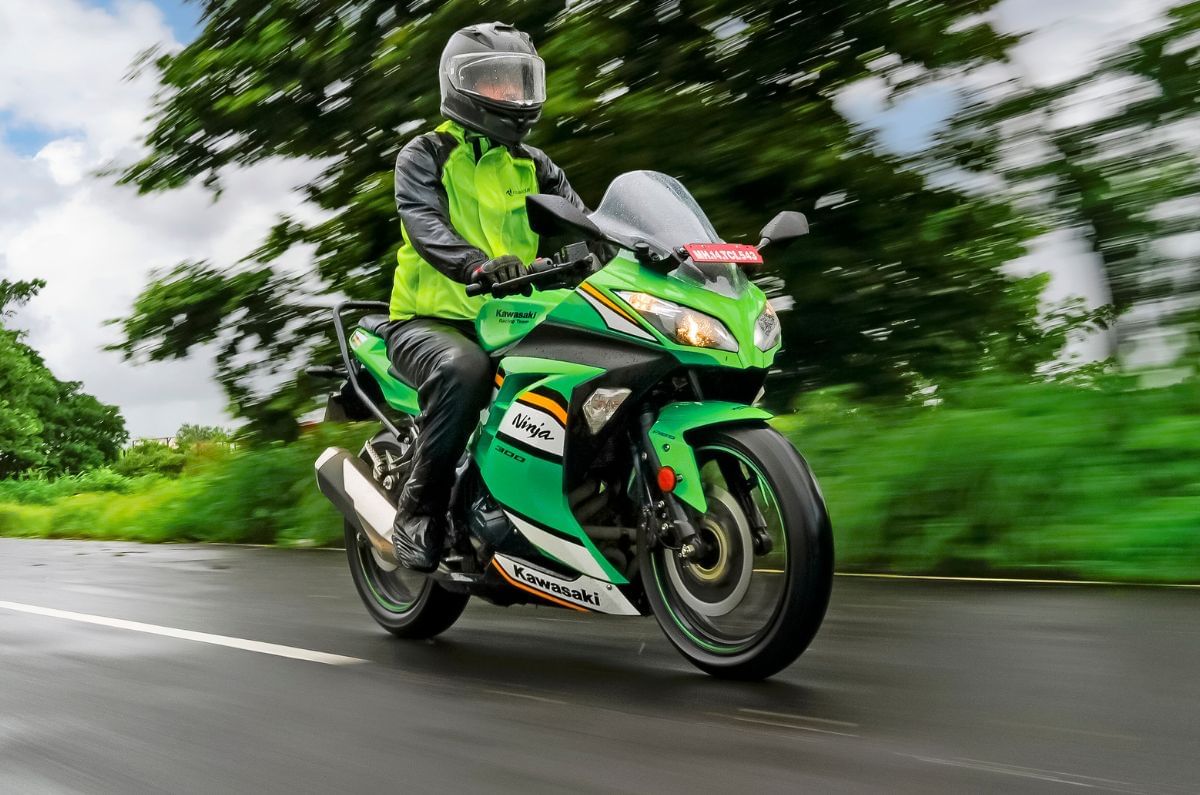
It’s hard to believe, but the Kawasaki Ninja 300 has been on sale in India since 2013. The 2025 update doesn’t bring any mechanical changes but rather fresh paint, new graphics and an updated headlamp setup. So, the big question remains: can the Ninja 300 still hold its own in a market now crowded with modern 300s and 400s?
Kawasaki Ninja 300 Design and quality – 7/10
An otherwise handsome looking machine that feels dated in key areas
Kawasaki’s familiar full-faired design still manages to turn heads, especially in this new Lime Green colour scheme. Additionally, Kawasaki has upgraded the headlight with a projector setup, which has improved illumination over the older version, even though it is still a halogen one.
| Weight and dimensions | |
|---|---|
| Kerb weight | 179kg |
| Seat height | 140mm |
| Fuel tank | 17 litres |
| Wheelbase | 1405mm |
| Ground clearance | 140mm |
However, it can’t hold a candle to some of the better LED projector units out there, like those on the TVS RR 310 or the new KTM Adventures that offer much brighter intensity.

The instrument cluster is a simple analogue tachometer with a basic digital readout. This sits in stark contrast to the information-dense TFT and Bluetooth-enabled screens we now see even on 200cc motorcycles.

That said, there is a certain sense of nostalgia in watching a needle climb past 13,000rpm, but more on that later. There’s no ride-by-wire, no riding modes, and no smartphone connectivity. Surprisingly, though, you don’t miss most of it when riding the bike.
Kawasaki Ninja 300 Riding position and comfort – 8/10
A comfortable sport tourer that’s better suited for shorter riders
Swing a leg over, and it’s immediately apparent that the Ninja 300 feels compact. At around 6 feet tall, I found the riding position just about manageable, though the bike’s somewhat high footpegs are better suited to shorter riders.

The seat is supportive enough for moderately long rides, and the clip-ons offer a sporty yet comfortable posture. The new windshield provides better wind deflection and looks more premium than before. The almost comical grab rail looks like a bit of an afterthought and already showed signs of rust on our test unit. However, it will serve well as a mounting point for any luggage.
Kawasaki Ninja 300 Performance and refinement – 7/10
Performance is approachable but not too exciting
The real charm of the Ninja 300 remains its 296cc parallel-twin liquid-cooled engine that still produces 39hp at 11,000rpm and 26Nm at 10,000rpm. It’s a motor that loves (and needs) to rev – and rev hard. It clears the 13,000rpm redline smoothly, and the throttle calibration is spot on for spirited riding or even at calm low speeds, although you won’t get much response unless the revs are really high.
| Engine | |
|---|---|
| Engine | Parallel-twin, 296cc, liquid-cooled |
| Power | 39hp at 11,000rpm |
| Torque | 26Nm at 10,000rpm |
| Gearbox | 6-speed |
On that note, the Ninja 300 feels rather sluggish under 10,000rpm, and you need to keep the motor spinning higher to unlock the performance. This results in slow roll-on acceleration, making the Ninja 300 slower than most 300cc motorcycles and on par with smaller 250cc motorcycles in terms of roll-on grunt.

While this definitely holds the bike back in 2025, the screaming performance also has its unique appeal if you’re into that sort of thing. The 6-speed gearbox and slipper clutch also work flawlessly, but a quickshifter would have made this experience even better. Despite the platform’s age, heat management is under control even in traffic. In our fuel-efficiency tests, the Ninja 300 returned 27.48kpl in the city and 29.31kpl on the highway, which is respectable for a high-revving twin-cylinder motorcycle.
Kawasaki Ninja 300 ride comfort and handling – 8/10
An easy going handler with slightly above average ride quality
One area where the Ninja 300 continues to shine is its balanced chassis and predictable handling. It doesn’t have the razor-sharp responses of some modern supersports, but there’s a sense of stability and composure here that inspires confidence.
| Suspension, tyres and brakes | |
|---|---|
| Suspension (f/r) | Telescopic fork / Monoshock |
| Brakes (f/r) | 290mm disc / 220mm disc |
| Tyres (f/r) | 110/70-17 / 140/70-17 |
That said, the suspension does feel a step behind newer rivals when it comes to composure over broken patches or sharper bumps. While acceptable for daily use, it lacks the plushness and damping finesse we’ve come to expect from newer rivals like the KTM RC 390 or even the TVS Apache RR 310.

The MRF Nylogrip Zapper tyres offer adequate grip for most street situations, but they’re not ideal for aggressive cornering or track work. I’d advise swapping these out for grippier rubber for even better performance. Braking is just adequate, which is – again – fine for everyday use, but it lacks the bite and feel of newer setups.
Kawasaki Ninja 300 Price and verdict – 7/10
A veteran that still delivers… In parts
The 2025 Kawasaki Ninja 300 is, in essence, the same motorcycle we first rode over a decade ago – and that’s both its charm and its limitation. It still offers good build quality, a rev-happy twin-cylinder engine and a relatively balanced chassis. But against today’s benchmarks, it feels behind the curve in terms of features, braking performance and suspension sophistication.

At Rs 3.17 lakh (ex-showroom, Delhi), the Ninja 300 remains one of India’s most affordable twin-cylinder sportbikes, which is its only trump card. However, Yamaha’s R3 is available for Rs 22,000 more and comes with more performance and a wider service network. While the Ninja 300 is a handsome motorcycle with nostalgic elements, for most buyers in 2025, there are simply better-rounded options available.






